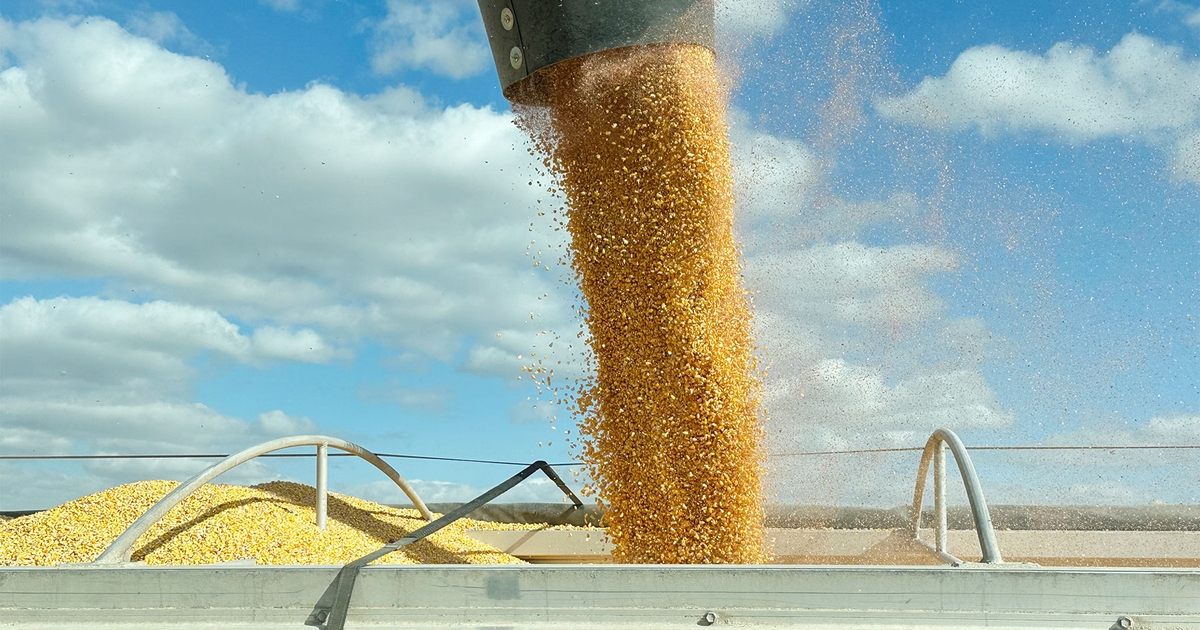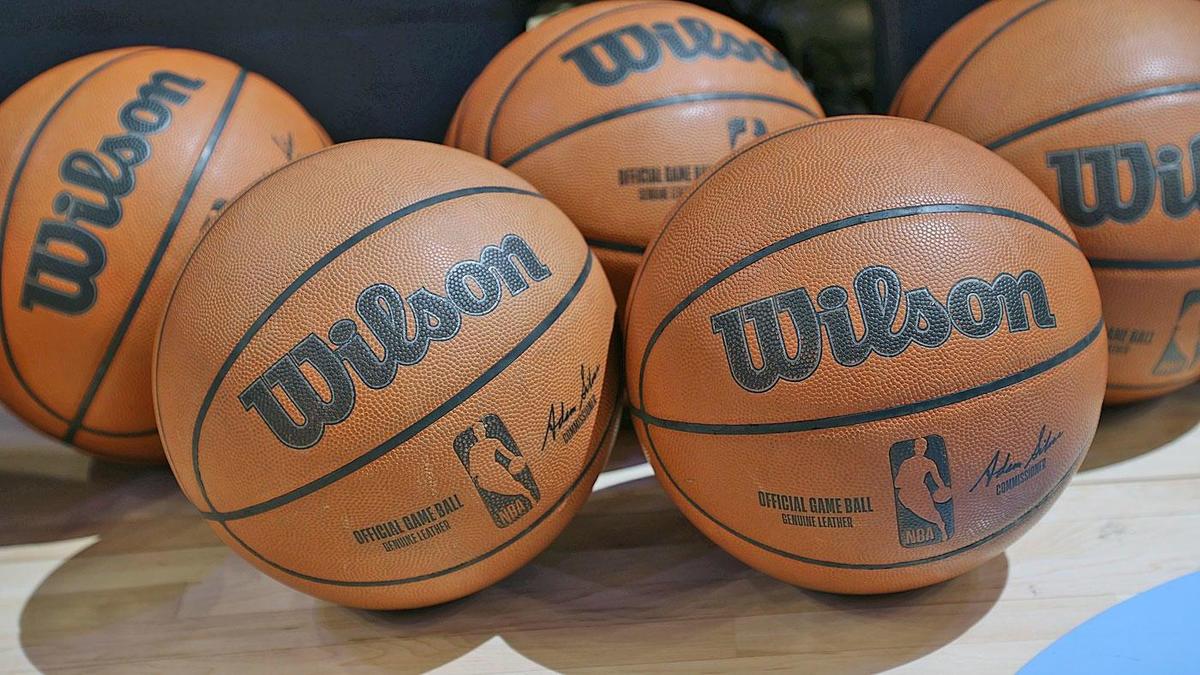Minnesota
Dramatic drop in Minnesota farm incomes

Last year was a rough year for Minnesota farmers, as lower prices for corn, soybeans and other commodities and challenging profitability for the dairy and hog sectors led to a drastic reduction in farm income.
Despite difficult growing conditions across much of the state, crop yields were close to average. But the prices for corn, soybeans, milk and pork fell during the year, causing an economic storm for many producers in Minnesota. On average, the farmers who submitted data to the analysis in 2023 averaged a net profit of 8 cents for every dollar in gross income, reflecting the high cost and thin margins of farming operations.
After three years of strong profits, the overall median net farm income for Minnesota farms fell to $44,719 in 2023, marking a return to the challenging levels faced from 2013 to 2019. This was down more than 76% from the previous year. The average Minnesota farm saw a reduction in working capital, stagnant retained earnings and limited profitability for the year.
“There was much uncertainty going into the 2023 production year for Minnesota farms. The sharp decline from 2022 profitability levels was not unexpected. Many farms were anticipating decreased commodity prices along with sticky input costs for the year,” says Pauline Van Nurden, Extension economist with the University of Minnesota’s Center for Farm Financial Management. “Most producers were in a good financial spot to handle a down year. The question now is how long these reduced profits will last.”
This analysis includes 2,335 participants in the Minnesota State Farm Business Management programs and 113 members of the Southwest Farm Business Management Association. Participating farmers represent about 10% of Minnesota’s farms with gross incomes over $250,000 annually.
The data are collected by farm management educators and housed in the FINBIN database at U-MN.
Persistently high expenses hamper real gains
The median net income for crop farms was $45,760, more than an 80% drop from the previous year. Crop sale prices during the year were similar to those seen in 2022, but the lower profit stems from higher expenses and reduced inventory values at the end of the year. In other words, crops are likely to be sold in 2024 for a lower price. When considering cash flow projections for the coming year, the majority of farm operations anticipate negative margins.
Low prices and high costs also affected many Minnesota livestock producers. Milk prices declined by 21%; dairy farm profits were down 73% from the previous year. Pork prices declined 16%, with a median net pork farm income loss of more than $32,000.
Beef production was the bright spot last year. Beef producers experienced higher median net farm income as a group. These producers capitalized on the record beef prices offered in 2023.
“Hog producers experienced the most challenging year on record, even worse than 1998. Thankfully, these producers had a strong financial foundation to lean on as they managed through the year. These producers lost nearly $30 per pig sold, which led to losing a half million dollars in working capital and a net worth loss year over year. Thankfully, pork prices have improved in early 2024, easing some challenges for these producers,” says Garen Paulson, lead field staff for the Southwest MN Farm Business Management Association.
“The Dairy Margin Coverage program provided needed support for dairy producers in 2023. This government program assisted producers as they managed through high feed costs and low milk prices,” says Nate Converse, farm business management instructor at Central Lakes College. “Without this program, dairy producers would have experienced a net farm income loss in 2023 as well. The coming year will be challenging too, given milk price futures and limited DMC program payments expected.”
Concern for 2024 prospects
There is much worry related to 2024 farm profitability in Minnesota. Farmers and consumers share many concerns, including inflation, rising interest rates and general economic uncertainty. The global market situation is also worrisome for Minnesota producers. Much of the future concern relates to decreased commodity prices, compressed margins and interest rate increases.
The latest USDA Farm Income Forecast echoes this concern. USDA’s February 2024 forecast predicts inflation adjusted net farm income will decrease more than 25% in 2024. If realized, this net farm income level would be well below the previous 20-year average.
“Input costs are typically ‘sticky’ for farmers. Commodity prices correct quickly, while input costs tend to stay high after they’ve increased. Over the last few years, machinery costs, land rent and fertilizer have all increased. These expenses don’t look like they will come down as fast as commodity prices falling,” Paulson says. “I encourage all farms to know their cost of production and focus on risk management planning for the coming year.”
New programming
In addition to data for traditional commodity agriculture, several FINBIN initiatives added in recent years help address emerging questions in Minnesota agriculture.
New programming includes a beginning farmer program to help with farm transitions. Decision tools are being developed to help address questions related to climate and agriculture. Also added are analyses of value-added farm enterprises, which include secondary enterprises for the farm such as crop custom work operations, trucking enterprises and food sales.
“We are excited to dig into the information related to value-added farm enterprises. The reality today is many farms diversify their operations with ‘side-gig’ enterprises. Minnesota farmers are entrepreneurial, especially those just starting to farm. Value-added enterprises allow the farm to diversify income streams and tap into more niche markets. We hope to learn more about the impact of these value-added enterprises and how they add value to many farm operations,” says Tina LeBrun of the Minnesota State Southern Agricultural Center of Excellence.
Source: University of Minnesota Extension

Minnesota
A Healing Journey With Lyrics

 When I was 39, I received a devastating diagnosis of stage 3 breast cancer. My sons were ages 3 and 6. The diagnosis of breast cancer was heart wrenching. My breasts had nurtured my two sons, defined my femininity, and then they were gone. I felt like I had been stripped of my magic powers.
When I was 39, I received a devastating diagnosis of stage 3 breast cancer. My sons were ages 3 and 6. The diagnosis of breast cancer was heart wrenching. My breasts had nurtured my two sons, defined my femininity, and then they were gone. I felt like I had been stripped of my magic powers.
How do you explain cancer to your young children while fighting the hardest physical battle you have ever faced?
I searched for a book I could read to my children, but eventually found my own words to explain what was happening. I self-published our family’s story. “Our Mama is a Beautiful Garden” is written in the voice of my two young sons, Louis and Maxwell.
During my recovery, I read books with my sons about Wonder Woman, whom I had idolized as a TV character while growing up. To me, Wonder Woman is what a woman should be: confident, physically strong, and caring. I came to an understanding that chemo gave me a superpower to fight off getting cancer again.
Mothering while battling breast cancer made me more resilient — however, the first decade of survivorship was not easy. The fear of getting sick again did not go away. I was 10 years cancer-free on my 50th birthday, which felt like a rebirth.
Not everybody gets a prognosis as good as I have. Not everybody gets to celebrate coming back from stage 3 cancer to full health. Survivor guilt is real.
I returned to the stage as a musician in 2022. My songwriting centers on honoring life’s stumbles and summits.
Today, my boys are ages 21 and nearly 18. My eldest started playing guitar during the pandemic; now we perform as an Americana/Blues mother-and-son duo, as well as with my band The Turnbuckles.
To celebrate the talents of Twin Cities mothers in music, I have organized a music festival that will use both stages at Hook & Ladder in Minneapolis on May 16, titled Mama Hellcats. It will lift up the importance of community and support networks, featuring information and representatives from organizations dedicated to providing support and resources for survivors of domestic violence and housing instability.
I have experienced times of abundance, when I donated furniture to Bridging, and moments of need, when I sought support from Sojourner to obtain a restraining order.
This festival and these musicians — who represent a range of family structures — is my way to honor survival, connection, and how we can be here for each other. The line-up includes my band, Kashimana, Annie & the Bang Bang, Nikki Lemire, Samantha Grimes, and Haley E Rydell.
[Editor’s note: Minnesota Women’s Press is a media partner for the event. Katy Tessman was a Changemaker in the magazine in 2013.]
Details: katytessman.com
Minnesota
3 Twins takeaways: Bailey Ober cuts up, Carlos Santana thaws out, Jhoan Duran closes in

And just like that, the Minnesota Twins have gone from rock bottom at 7-13 to the hottest team in baseball, winning seven consecutive games to claw their way back to a winning record for the first time since the opening week of the season.
It’s fair to note the winning streak has come against the lowly Chicago White Sox and only slightly less lowly Los Angeles Angels, but wins are wins, especially for a team that was struggling as much as the Twins. Plus, they’re far from finished with the White Sox, starting a three-game series Monday night in Chicago as part of nine remaining games against the American League’s worst team.
Better yet, Carlos Correa’s return to a suddenly hot-hitting lineup is imminent.
This might be the truest representation of Rocco Baldelli’s off-camera personality ever caught on camera. https://t.co/bBuuos42aj
— Aaron Gleeman (@AaronGleeman) April 28, 2024
Here are three Twins takeaways after a weekend spent sweeping the Angels.
Ober cutting through lineups
Bailey Ober’s first start of the season was the worst start of his career. Facing the Royals in Kansas City, he failed to make it out of the second inning, allowing three homers and eight total runs. It was so uncharacteristically bad, and added to his already abysmal history versus the Royals, that Ober and manager Rocco Baldelli both questioned if Kansas City “had something” on him.
Ober won’t have another chance to face the Royals before late May, but in the meantime he’s responded to the season-opening stumble with a dominant four-start stretch that ranks among the best of his career. Culminating with Friday’s road win over the Angels in which Ober tied a career-high with 7 1/3 innings, he has a 1.48 ERA since the Kansas City clunker.
He tossed five innings of one-run ball versus the mighty Los Angeles Dodgers, surrendered a total of one run in back-to-back six-inning starts against the rival Detroit Tigers and no-hit the Angels into the sixth inning. Overall, across four starts, Ober posted a 24-to-6 strikeout-to-walk ratio in 24 1/3 innings, giving up zero homers and a .136 opponents’ batting average.
Don’t let his mediocre-looking 4.21 ERA mask the fact that Ober is pitching better than ever. His fastball is averaging a career-high 92.3 mph, his changeup is generating a career-best 42.6 percent swing-and-miss rate to emerge as a real weapon versus left-handed hitters, and he’s seamlessly incorporated a new cutter as part of what is now a five-pitch arsenal for the 6-foot-9 strike-thrower.
“It’s been great,” Ober said of his new cutter. “It feels good right now and I feel like the main thing I’m able to do with it is get it glove-side. Be able to locate it in to lefties and away to righties. And that is really setting up everything else. I’m able to throw my slower, bigger breaking ball off that and get the changeup fading away.”
Ober has quickly gained confidence in the cutter as a go-to pitch versus righties and lefties, throwing it 26 percent of the time, second to only his fastball. And rightfully so, as opponents have done little against it, batting just .200 with one extra-base hit. It’s another useful tool for Ober, who has consistently improved his velocity and refined his individual pitches since debuting in 2021.
Ober tends to fly under the radar because he lacked the raw stuff in the minors to rank as a top prospect, but he’s been one of the most effective starters in Twins history with a 114 ERA+ in 62 starts. In the past 30 years, only Johan Santana (175 starts, 141 ERA+) and Ervin Santana (85 starts, 116 ERA+) have made more starts with a better ERA+ than Ober in a Twins uniform.
Bailey Ober’s 2Ks in the 3rd…and Sword. ⚔️ pic.twitter.com/GTjSv0p5K1
— Rob Friedman (@PitchingNinja) April 27, 2024
First glimpse of Slamtana
When a previously struggling lineup scores 57 runs in seven games, including back-to-back double-digit outbursts, there’s obviously going to be a lot to like, but the most encouraging aspect might be the thawing of Carlos Santana’s bat.
Signed to a one-year, $5.25 million contract as the biggest-money and biggest-name addition of the Twins’ offseason, Santana hit .141 with zero homers in his first 20 games. That naturally led to questions about how long the Twins should stick with the 38-year-old first baseman, but multiple team officials downplayed the possibility of giving up on Santana, or any well-respected veteran, this early.
“As long as they are putting in the work, we are putting in the work right beside them,” president of baseball operations Derek Falvey said last week. “The most important thing we can do is create an environment that supports them. We are all in this to try to figure it out together. If we have to assess those more difficult realities, we do that a little bit later. It’s usually not a couple of weeks into the season.”
Patience with Santana has started to pay off. At minimum, he bought himself some more time by hitting .286/.355/.679 over the seven-game winning streak, including a homer in three straight games. Santana’s season totals are still ugly, but that stretch raised his batting average from .133 to .182 and his OPS from .374 to .583. And he’s been as advertised defensively, providing an upgrade at first base.
SLAMTANA DOES IT AGAIN 💣#MNTwins | #MLB pic.twitter.com/ALNWIQsNZr
— Bally Sports North (@BallySportsNOR) April 28, 2024
Rehabbing relievers Duran, Topa near returns
Jhoan Duran brushed off the lack of his typically jaw-dropping fastball velocity after averaging “only” 98.1 mph in his first Triple-A rehab appearance last Tuesday, noting that it was his first game action in nearly six weeks and he was focusing on simply throwing strikes. Duran, who has been out since spring training with an oblique strain, allowed two runs on four hits.
Sure enough, Duran looked much more like his normal, overpowering self in Saturday’s second rehab outing with the Saints, averaging 101.8 mph with his fastball in a scoreless, 1-2-3 inning. Duran topped out at 102.9 mph, struck out two and got whiffs on six of eight swings, suggesting the Twins’ closer is on the verge of coming off the injured list. And he (and Correa) may not be alone.
Justin Topa, who’s also been sidelined since spring training with knee tendinitis, appears close to joining the Twins’ bullpen as well. He started a Triple-A rehab stint with a scoreless inning Thursday, striking out all three batters he faced, but Topa’s scheduled Sunday appearance was rained out. His velocity Thursday was down a tick or two from the right-hander’s mid-90s norm last season.
Acquired from the Seattle Mariners in the Jorge Polanco trade, Topa was slated to slot fourth in the bullpen pecking order behind Duran, Griffin Jax and Brock Stewart. Twins relievers have fared shockingly well despite missing two top arms, posting a 2.62 ERA with 123 strikeouts in 99 2/3 innings to reinforce the idea that they project as one of the best bullpens in baseball if/when everyone is healthy.
(Photo of Carlos Santana: Kevork Djansezian / Getty Images)
Minnesota
How to watch Phoenix Suns vs. Minnesota Timberwolves: Live stream, TV channel, start time for Sunday’s NBA game

3rd Quarter Report
The Suns and the Timberwolves have shown up to the match, but their offenses sure haven’t. The Suns have jumped out to a 61-56 lead against the Timberwolves.
The Suns entered the game with three straight losses and they’re well on their way to making it four. Can they turn things around, or will the Timberwolves hand them another defeat? Only time will tell.
Who’s Playing
Minnesota Timberwolves @ Phoenix Suns
Regular Season Records: Minnesota 56-26, Phoenix 49-33
Current Series Standings: Phoenix 0, Minnesota 3
How To Watch
- When: Sunday, April 28, 2024 at 9:30 p.m. ET
- Where: Footprint Center — Phoenix, Arizona
- TV: TNT
- Follow: CBS Sports App
- Ticket Cost: $90.00
What to Know
The Suns will be in front of their home fans on Sunday, but a look at the spread shows they might need that home-court advantage. They will fight it out against the Minnesota Timberwolves in a Western Conference playoff contest at 9:30 p.m. ET at Footprint Center. The Suns are staggering into the matchup hobbled by three consecutive losses, while the Timberwolves will skip in buoyed by three consecutive wins.
While the experts predicted the Suns would be headed into the match after a victory, that’s not how things played out against the Timberwolves on Friday. The game between the Suns and the Timberwolves wasn’t particularly close, with the Suns falling 126-109. Phoenix was down 95-73 at the end of the third quarter, which was just too much to recover from.
The Timberwolves can attribute much of their success to Anthony Edwards, who almost dropped a double-double on 36 points and nine rebounds. Rudy Gobert was another key contributor, dropping a double-double on 19 points and 14 rebounds.
This is a must-win for the Suns as the Timberwolves are a game away from taking the series. Check back here after the game to see if the Suns can force a Game 7 or if the Timberwolves leave them behind.
Odds
Minnesota is a slight 1.5-point favorite against Phoenix, according to the latest NBA odds.
The oddsmakers had a good feel for the line for this one, as the game opened with the Timberwolves as a 1-point favorite.
The oddsmakers are predicting a defensive showdown and set the over/under low at 211 points.
See NBA picks for every single game, including this one, from SportsLine’s advanced computer model. Get picks now.
Series History
Phoenix has won 6 out of their last 10 games against Minnesota.
- Apr 26, 2024 – Minnesota 126 vs. Phoenix 109
- Apr 23, 2024 – Minnesota 105 vs. Phoenix 93
- Apr 20, 2024 – Minnesota 120 vs. Phoenix 95
- Apr 14, 2024 – Phoenix 125 vs. Minnesota 106
- Apr 05, 2024 – Phoenix 97 vs. Minnesota 87
- Nov 15, 2023 – Phoenix 133 vs. Minnesota 115
- Mar 29, 2023 – Phoenix 107 vs. Minnesota 100
- Jan 13, 2023 – Minnesota 121 vs. Phoenix 116
- Nov 09, 2022 – Phoenix 129 vs. Minnesota 117
- Nov 01, 2022 – Phoenix 116 vs. Minnesota 107
-

 Kentucky1 week ago
Kentucky1 week agoKentucky first lady visits Fort Knox schools in honor of Month of the Military Child
-

 News1 week ago
News1 week agoIs this fictitious civil war closer to reality than we think? : Consider This from NPR
-

 World1 week ago
World1 week agoShipping firms plead for UN help amid escalating Middle East conflict
-

 Politics1 week ago
Politics1 week agoICE chief says this foreign adversary isn’t taking back its illegal immigrants
-

 Politics1 week ago
Politics1 week ago'Nothing more backwards' than US funding Ukraine border security but not our own, conservatives say
-

 News1 week ago
News1 week agoThe San Francisco Zoo will receive a pair of pandas from China
-

 World1 week ago
World1 week agoTwo Mexican mayoral contenders found dead on same day
-

 Politics1 week ago
Politics1 week agoRepublican aims to break decades long Senate election losing streak in this blue state














